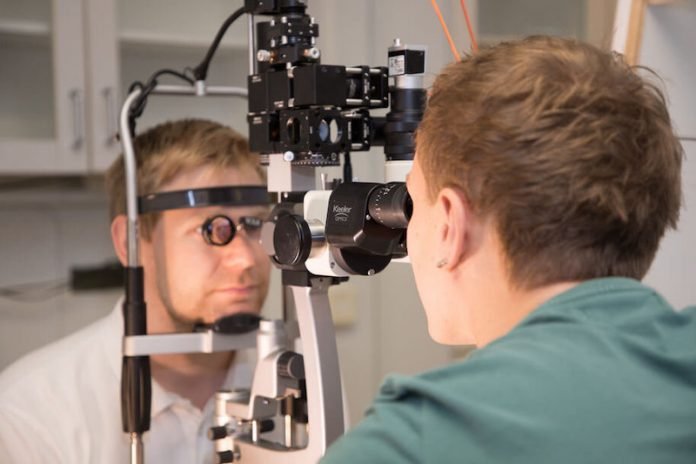
In a new study, researchers have developed a new laser therapy that may stop the progression of age-related vision loss.
The research was conducted by a team from Aalto University.
There are 200 million people in the world living with age-related macular degeneration (AMD).
About 20% of these cases progress to an advanced stage, leading to visual impairment.
Advanced AMD is divided into wet and dry forms. While wet AMD can be treated with medical injections, about 80% of advanced AMD cases are of the dry form.
There is currently no medical treatment for the dry form of AMD.
The causes of AMD include oxidative stress and protein misfolding and aggregation.
In the new study, the team developed a heat treatment for the back of the eye, which strengthens the defense mechanisms of retinal cells.
These mechanisms help proteins refold back into their correct forms, and at the same time stimulate the natural healing process.
The new Maculaser heat treatment involves heating the retinal pigment epithelium at the back of the eye (at the fundus) with a near-infrared laser and precise temperature control.
The aim is to stop the development of the condition in its early stages and to prevent it from progressing to the dry or wet form.
The team says that heat treatment is not a new invention, but until now, it has not been possible to monitor the temperature of the retinal pigment epithelium while the treatment is administered.
This is essential to avoid damage to the tissues being treated.
In the new Maculaser heat treatment, the temperature elevation of the fundus is determined from the acceleration of electrical signaling of retinal nerve cells in response to light stimuli.
The signals can be registered in real-time from the surface of the eye using electroretinography.
With this method, the voltage change caused by light flashes is measured using electrodes placed on the surface of the eye and the skin near the eye.
The whole treatment consists of heating the fundus by directing a near-infrared laser through the pupil utilizing a slit lamp biomicroscope.
The treatment is given every few months and usually lasts for a minute and can take care of the entire target area in one go.
The goal of the researchers is that ophthalmologists would get to try out the new treatment device in 2020.
The lead author of the study is Professor Ari Koskelainen.
Copyright © 2019 Knowridge Science Report. All rights reserved.



